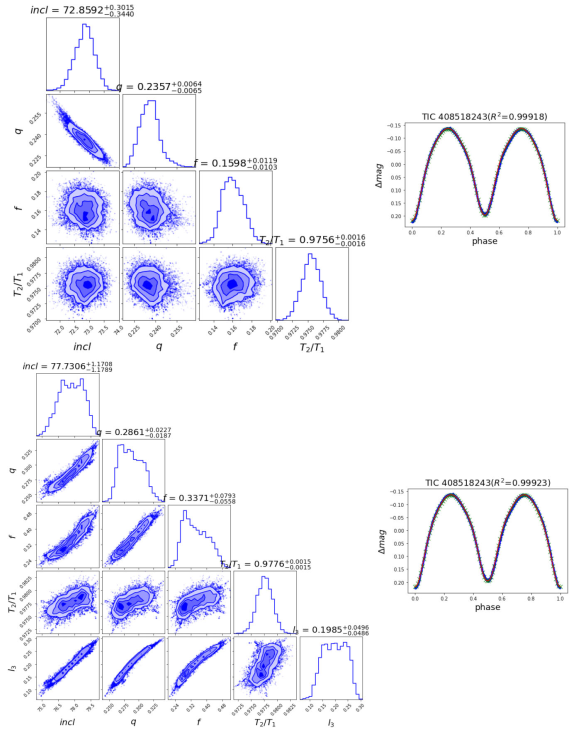Recently, Dr. DING Xu and researcher JI Kaifan of Yunnan Observatories, have used machine learning methods to quickly obtain the parameters and errors of contact binaries from the Transiting Exoplanet Survey Satellite(TESS) survey. This study was published in Monthly Notices of the Royal Astronomical Society.
Contact binary is a strongly interacting binary system with two component stars filled with their Roche lobes, and there is a common envelope around the component stars. With the release of thousands of light curves of contact binaries, if the current Wilson – Devinney or Phoebe program is used to derive the parameters of contact binaries, the time to derive the parameters of one target can be as long as several hours or days. Therefore, we need a fast method to derive the parameters of contact binaries for such a large number of light curves.
The researchers first used a neural network (NN) to establish the mapping relationship between the parameters of the contact binary stars and the light curve, and obtained one model without the influence of the third light and one model with the influence of the third light, respectively. The accuracy of the light curves generated by these two models is less than one thousandth of the magnitude, and the parameters and corresponding errors of the contact binaries can be quickly obtained by combining the Markov Chain Monte Carlo (MCMC) algorithm. Compared with the traditional methods, this method not only meets the requirements in accuracy, but also improves the speed by 4 orders of magnitude under the same running condition. This method makes it possible to derive the parameters of a large number of contact binaries.
This research work has been funded by the Chinese Natural Science Foundation and the China Manned Space Project.

Left: posterior distributions of parameters of TIC 408518243 (nol3 and l3) are obtained by NN model and the MCMC algorithm. Right: fitting results of TIC 408518243. The blue dots are the original light curve. The red line is the light curve generated by the NN model. The x points are the light curve generated by Phoebe.
Contact:
DING Xu
Yunnan Observatories, CAS
E-mail: dingxu@ynao.ac.cn